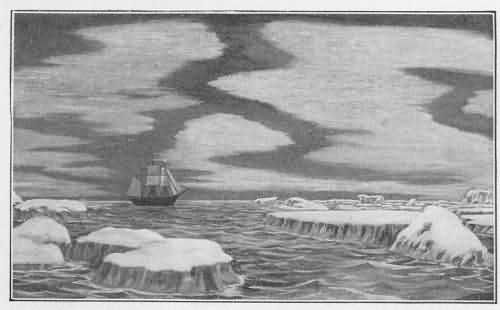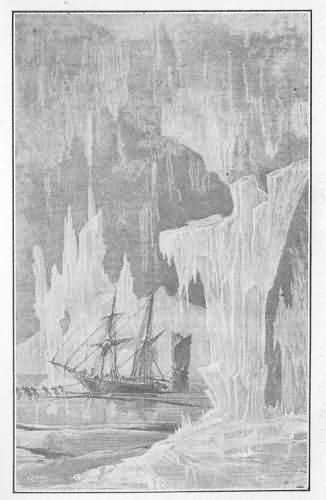
|
|

IN presenting the different reports on the water-sky, or the ice-blink, it will be well to point out that a reflection of the earth's surface in the sky is of more importance than seems at first to be the case. How hard it is for most people to believe anything new or different from what they were taught when young! The reflection in the sky, as seen in the Arctic Circle, is very peculiar. Something, not easily explained, causes the skies in that vicinity to act as a mirror when the atmosphere is in a certain condition: the surface of the earth is reflected accurately. The entrance to the interior of the earth is undoubtedly the cause; but how or why, I cannot tell; it is sufficient for our purposes, however, to know that it positively does act as a mirror.

To show that the sky reflects the conditions of the ice, water, and land would not be of so much importance: that fact could not be used to prove that the earth is hollow. But to prove that the Aurora Borealis is nothing but the reflection of a burning volcano, prairie- or forest-fire in the interior of the earth, would be important. Quotations from the various authorities on Arctic exploration are cited here for the purpose of proving the correctness of my views.
Throughout Nansen's work he gives accounts of water-skies. In Volume Il, page 472, his diary states:
"Wednesday, March 25th--There is the same dark water-sky behind the promontory in the southwest, stretching thence westward almost to the extreme west. It has been there all through this mild weather, with southwesterly wind, from the very beginning of the month. There seems to be always open water there, for no sooner is the sky overcast than the reflection of water appears in that quarter."
The object of quoting so many authorities on this subject is to show that what is termed "water-sky" is not the whim or fancy of one explorer, but a fixed fact, and one of the things that northern explorers always depend upon as being absolutely reliable: the condition of the surface in that country is reflected in the sky so accurately that anyone can understand it. The water-sky is seen whenever the skies are overcast. This fact supports the claim that the aurora is a great fire underneath, reflected in the sky, and must come from a burning volcano, prairie- or forest-fire in the interior of the earth.
Nansen also adds: To judge by the sky, there must be a number of lanes in the south and southwest,"--a supposition that afterward proved to be correct,--and on page 233, Volume II, he continues:
"In front of us on the horizon we have a water-sky, or at any rate a reflection which is so sharply defined and remains so immovable that it must either be over water or dark land; our course just bears on it. It is a good way off, and the water it is over can hardly be of small extent; I cannot help thinking that it must be over land. May it be so! But between us, to judge by the sky, there seems to be plenty of lanes."
Nansen and his companion, Johansen, were endeavoring by the appearance of the sky to determine whether water, ice, or land was ahead. It happened to be water, as many lanes, representing openings in the ice, were reflected in the sky. They invariably depended upon the appearance of the sky to determine the condition of the water or ice on the earth ahead. And he mentions that soon after this the lanes were so numerous that they retarded their progress very much. Many times they were obliged to go miles around them, and in those directions found land and water, just as the sky indicated that they would, When flames flash through the heavens, wise men tell us that, instead of considering that there is fire on the earth, or in the interior of the earth, it is an Aurora Borealis, and supposed to be electricity.
It is strange that there is no difference of opinion about the reflection of land, water, or ice, while there is so much about fire. Perhaps the only reason why there is any difference of opinion as to what causes the reflections of the aurora is that no one happens to think of its being fire. This error arose from the fact that no one entertained the idea that the reflection could arise from fire, as they knew nothing about the earth being hollow.
Nansen proceeds to enlighten us concerning the water-sky, and imparts some of his restless ambitions to us. In Volume II, page 261, he says:

WATER-SKY.
Here is another view showing how the surface of the earth, water,
and ice is reflected as in a mirror.
"Johansen, who has gone out, says the same water-sky is to be seen in the south. Why is it we cannot reach it? But there it is, all the same, an alluring goal for us to make for, even if we do not reach it very soon. We see it again and again, looking so blue and beautiful; for us it is the color of hope."
The sky, extending over the entrance to the interior of the earth, seems to act in some way as a mirror, and reflects objects of size on the surface of the earth plainly and clearly. It is such a true mirror that for hundreds of years people living there or those going there, learn to tell from what is reflected just what to expect.
Another explorer of the north, Kane, on page 152, writes that "as the surface of the glacier receded to the south, its face seemed broken with piles of earth and rock-stained rubbish, till far back in the interior it was hidden from me by the slope of a hill. Still beyond this, however, the white blink or glare of the sky above showed its continued extension."
Heretofore, I have quoted almost entirely from Arctic explorers in reference to the condition of the skies, and how the appearance of the latter determines the condition of the water and the ice. Bernacchi, who spent nearly two years in the Antarctic regions, declares that, in speaking of the Antarctic:
"Before noon the storm had passed, and we made strenuous efforts to reach some water to the east, which was indicated by a strongly marked 'water-sky' in that direction. Toward evening of the next day, we reached the open sea, being then in latitude 65 deg. 33 min. S. and longitude 165 deg. 48 min. E. There was a swell from the north, and the temperature of the sea rose from 29 deg. 1 F. at the edge of the pack to 30 deg. 8 F. We were now in very nearly the same position as we had been six weeks before, and during those six weeks we had burnt nearly one hundred tons of coal, with little result." (Page 60.)
This assures us that the same sort of sky is seen in the Antarctic regions as in the Arctic. Something causes it to act as a mirror in both circles, and reflects the condition of the earth in the sky.